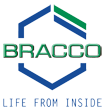The CT Colonography (CTC) Process
You can talk with your doctor about the process in more detail. You can also visit the radiologyinfo.org website for a complete overview of the exam.
Prepping
“Prepping” (cleaning out the colon) is necessary before the CTC exam, as it is before a colonoscopy. Bowel preparation can be a little unpleasant, but there are now gentler cleansing regimens for CTC that can make the process easier. Your doctor will explain how you should prepare for the CTC exam.
Scanning
Prior to scanning, the colon is insufflated with either room air or carbon dioxide (CO2): insufflation with carbon dioxide has been shown to be more comfortable for the patient.1 Then, two CT scans of the abdomen and pelvis are taken, typically one where you are lying on your stomach and one where you are lying on your back. Each scan usually takes less than 30 seconds! Once the scanning is complete, you’re done!
Interpretation
Data from the CT scanner is sent to the CTC workstation, where it is converted to 2-D and 3-D images. The radiologist will interpret the images and provide a report of your exam to your physician.
Find Out if it is Covered
Click here to see a list of commercial insurance providers that cover CTC as a screening and/ or diagnostic test. Note that Medicare covers CTC as a diagnostic test only at this time.
A Colorectal Cancer Screening Coalition is working on securing coverage for CT Colonography as a screening test – the member organizations include:
- American College of Radiology (ACR)
- American Gastroenterological Association
- Bracco Diagnostics Inc.
- Colon Cancer Alliance (CCA)
- Colon Cancer Coalition (CCC)
- iCAD
- Medical Imaging Technology Alliance (MITA)
- Prevent Cancer Foundation (PCF)
- Society of Abdominal Radiology (SAR)
- Society of Computed Body Tomography & Magnetic Resonance (SCBT-MR).
Email SFarley@acr.org for more information or to join forces with the Coalition.
1Dachman AH. Advice for optimizing colonic distention and minimizing risk of perforation during CT colonography. Radiology. 2006;239:317-321.
